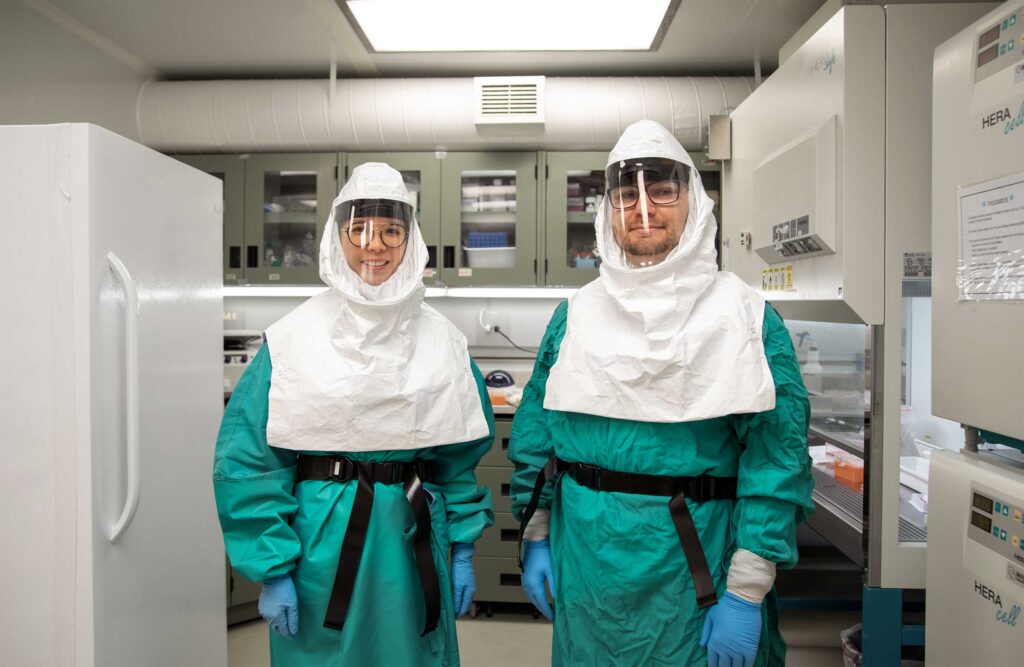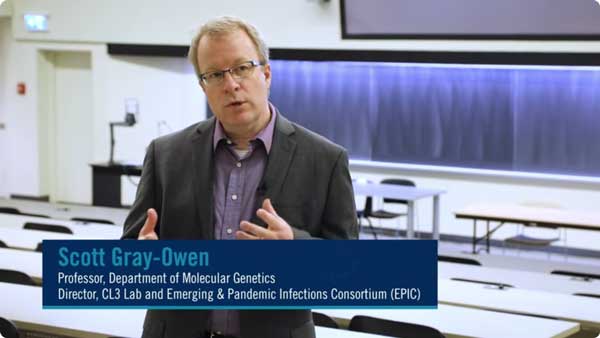Revitalization of the Toronto High Containment Facility

The Toronto High Containment Facility (THCF) is the largest containment level 3 (CL3) lab in Ontario, enabling researchers to study high-risk pathogens in a safe and secure manner.
During the COVID-19 pandemic, the facility ran 24-7 as researchers pivoted their work from existing infectious diseases, such as HIV and tuberculosis, to deal with the new and urgent threat. The THCF played a critical role in accelerating key research breakthroughs that guided the pandemic response in Ontario and Canada. It was the first lab in Canada, and among the first in the world, to isolate the novel coronavirus in March 2020. This effort was led by Samira Mubareka and Rob Kozak, both professors in U of T’s Department of Laboratory Medicine & Pathobiology and researchers at Sunnybrook Health Sciences Centre.
Despite its successes, investment has been critically needed to modernize the facility and expand its working capacity to enable the THCF to meet the needs of its partner hospitals and their associated research teams. Since the COVID-19 pandemic started, the current CL3 facilities have successfully supported the work of over 45 research teams in compliance with safety regulations, in a space that was originally designed to accommodate a quarter of that capacity.
Thanks to the collaborative work of the leadership, faculty, and hospital partners of the Emerging and Pandemic Infections Consortium (EPIC) and the support of the ISI Office, U of T has received two significant government investments that will accelerate critical infectious disease research and allow Canada to respond more quickly, effectively, and equitably to future pandemics.
In November 2022, U of T received $35 million from the Canada Foundation for Innovation’s (CFI) Biosciences Research Infrastructure Fund (BRIF) to revitalize the THCF. The award is the largest CFI grant U of T has received to date. Funds will support the university’s plan to modernize the 20-year-old facility. In March 2024, the Ontario Government committed an additional $10 million to support this project through the Ontario Research Fund.
Once complete, the updated lab space will have increased research capacity enabling researchers to study a greater variety of emerging and re-emerging pathogens and to take on new projects during a pandemic without reducing capacity for ongoing work. The revitalization will support new collaborations between academic researchers, public sector and industry partners, as well as provide unique training opportunities to ensure that Canadian researchers are ready to respond to future infectious threats.
One example of the world-class research facilitated by THCF is the recent development of a unique heart-on-a-chip model that is helping untangle the causes of COVID-19-induced heart inflammation and uncover strategies to reduce its impact. Milica Radisic, a professor at U of T’s Institute of Biomedical Engineering and a senior scientist at University Health Network, co-led the study.
“This work would simply not be possible without the Toronto High Containment Facility,” says Radisic.

To learn more about this project and others from EPIC, watch “Preventing the next pandemic”, an episode of the Groundbreakers video series.